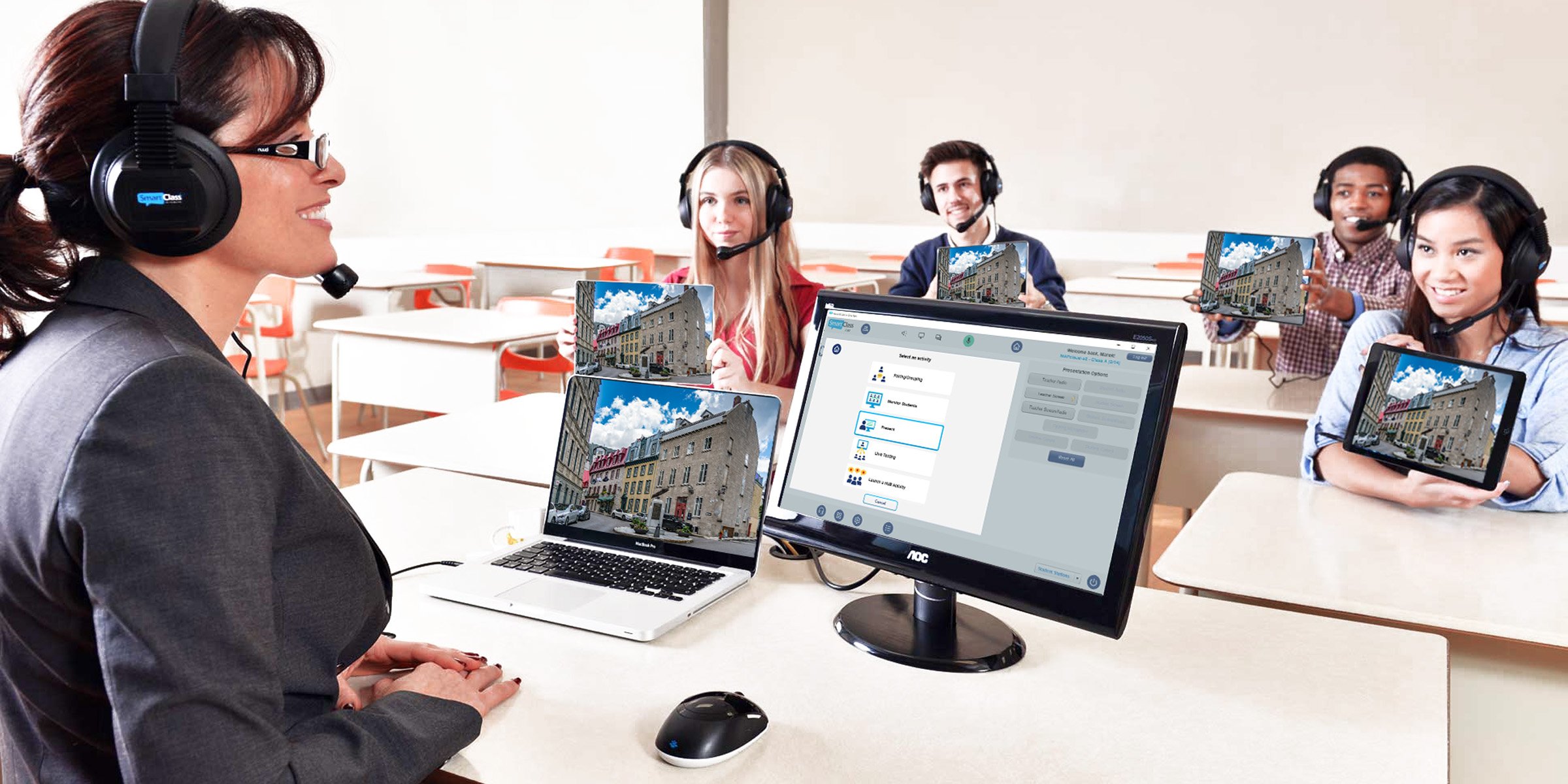Engaging assignments to maintain foreign language skills over breaks
Discover innovative ways for language teachers to keep students engaged and practicing their foreign language skills during breaks.
1. Interactive language games and quizzes
One effective way for language teachers to help students maintain their foreign language skills over breaks is by incorporating interactive language games and quizzes into their assignments. These activities not only make learning fun and engaging but also provide an opportunity for students to practice their language skills in a dynamic and interactive way. Teachers can assign online language quizzes through platforms like the SmartClass Teaching Platform, where students can access a wide range of interactive learning materials tailored to their language level and curriculum. Online games such as Kahoot! or flashcards created with Quizlet are another great way to keep students learning.
Interactive language games and quizzes can be easily customized to target specific language areas that students may need more practice in. For example, teachers can design a quiz that focuses on verb conjugation or a game that challenges students to match vocabulary words with their corresponding definitions. This allows teachers to tailor the assignments to the individual needs of their students and ensure that they are practicing the areas that require the most attention.
By participating in these games and quizzes, students can reinforce their vocabulary, grammar, and comprehension skills while enjoying the process.

2. Virtual language exchange programs
Another great way for language teachers to encourage students to practice their foreign language skills over breaks is by introducing them to virtual language exchange programs. These programs provide a platform for students to connect and communicate with native speakers of the language they are learning, allowing them to practice their conversational skills in a real-world context.
By engaging in conversations with native speakers, students can improve their pronunciation, fluency, and cultural understanding, all while making meaningful connections with people from different backgrounds.
Virtual language exchange programs offer a unique opportunity for students to immerse themselves in the target language and culture, even when they are not physically present in a foreign country.
If that isn't an option at your school, you could use the SmartClass Teaching Platform to set up videos and activities that feel like a virtual exchange. Upload a video of someone introducing themselves in a foreign language, and ask your students to respond. Give your students lots of prompts of different videos they can record within the SmartClass platform or use the already created curricula that include authentic videos and interviews with native speakers of English, Spanish, and German.

3. Creative writing assignments
Creative writing assignments can be an effective way for language teachers to keep students engaged and practicing their foreign language skills over breaks. By assigning students to write short stories, poems, or journal entries in the target language, teachers can provide them with an opportunity to express themselves creatively while also practicing their writing skills.
Teachers can encourage students to use the Smartclass Teaching Platform to access writing prompts and resources that will help them develop their writing skills in the target language. By providing specific prompts or themes, teachers can guide students in their writing process and ensure that they are practicing the relevant vocabulary, grammar, and sentence structures.
Creative writing assignments not only allow students to practice their writing skills, but also promote critical thinking, creativity, and self-expression. By assigning these types of assignments, language teachers can keep students engaged and motivated to continue practicing over breaks.

4. Cultural exploration projects
To help students maintain their foreign language skills over breaks, language teachers can assign cultural exploration projects that allow students to learn more about the culture and traditions associated with the language they are learning. These projects provide an opportunity for students to deepen their understanding of the language in a cultural context and make connections between language and culture.
Teachers can assign students to research and create presentations, videos, or posters about various aspects of the target culture, such as holidays, traditional food, music, or famous landmarks. By incorporating multimedia elements into these projects, students can engage with the material in a more interactive and dynamic way.
The SmartClass Teaching Platform can be a valuable resource for students to access authentic cultural materials, such as videos, articles, and audio recordings, to support their research and project development. By exploring these materials, students can gain a deeper appreciation for the target culture and strengthen their language skills in the process.

5. Utilizing language learning apps
Language learning apps can be a convenient and effective tool for language teachers to recommend to students for practicing their foreign language skills over breaks. These apps provide a wide range of interactive exercises, vocabulary quizzes, and listening activities that can help students reinforce their language skills in a fun and engaging way.
Teachers can recommend specific language learning apps that align with the curriculum and language level of their students. For example, the SmartClass Teaching Platform offers over 5800 activities that are designed to complement any teaching style and foster all language skills. By recommending these apps or assigning specific activities within SmartClass to students, teachers can ensure that they are practicing the relevant language concepts and skills.
One advantage of language learning apps is that they can be easily accessed on smartphones or tablets, allowing students to practice their language skills anytime and anywhere. This flexibility makes it convenient for students to incorporate language learning into their daily routine, whether they are traveling, relaxing at home, or waiting for an appointment.
Do you have any other tips or resources you would like to share with language teachers around the world? Comment on this blog or share it on social media with your added suggestions. The more resources and ideas we can gather, the better we can support our language learners throughout their language-learning journey and prepare them for this amazing global and interconnected world we live in.


